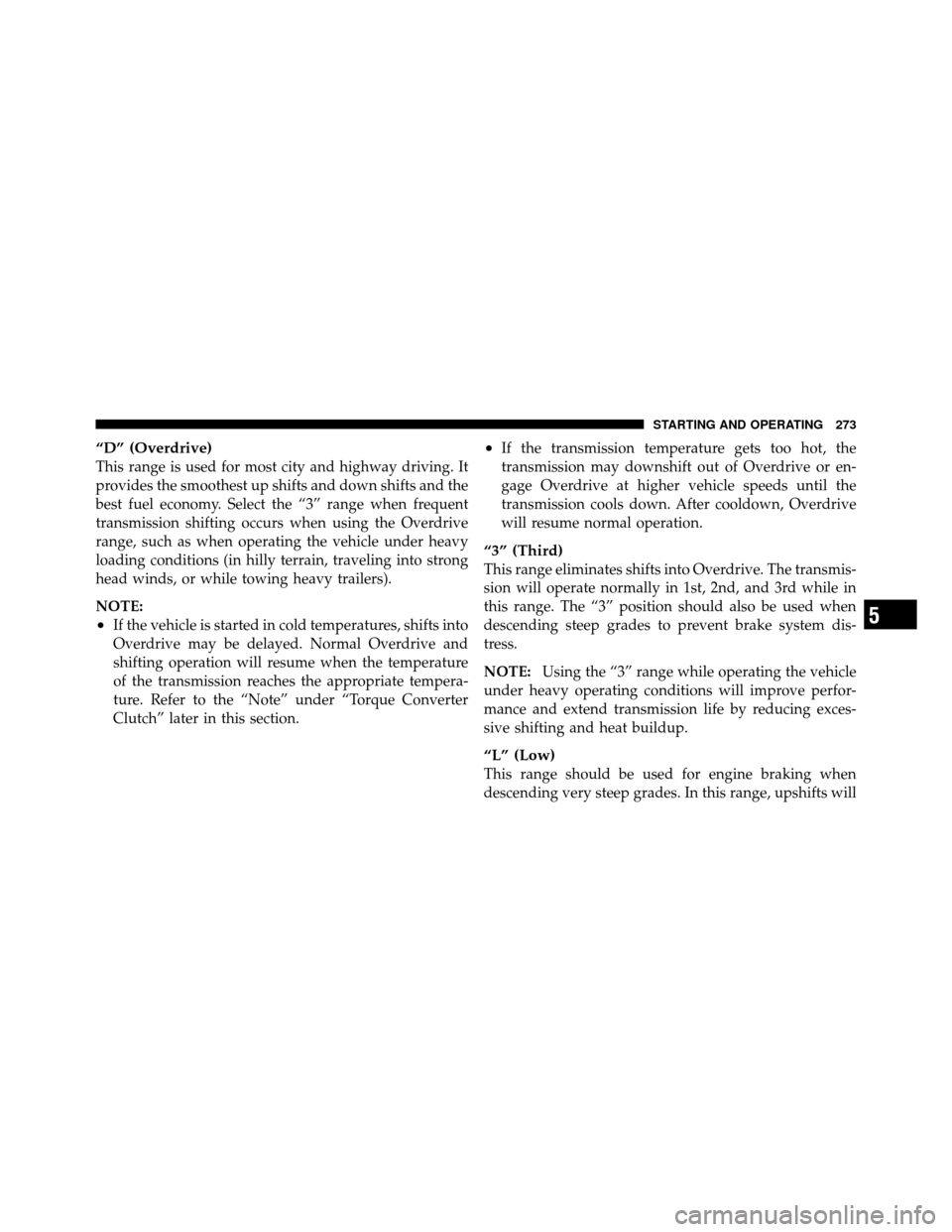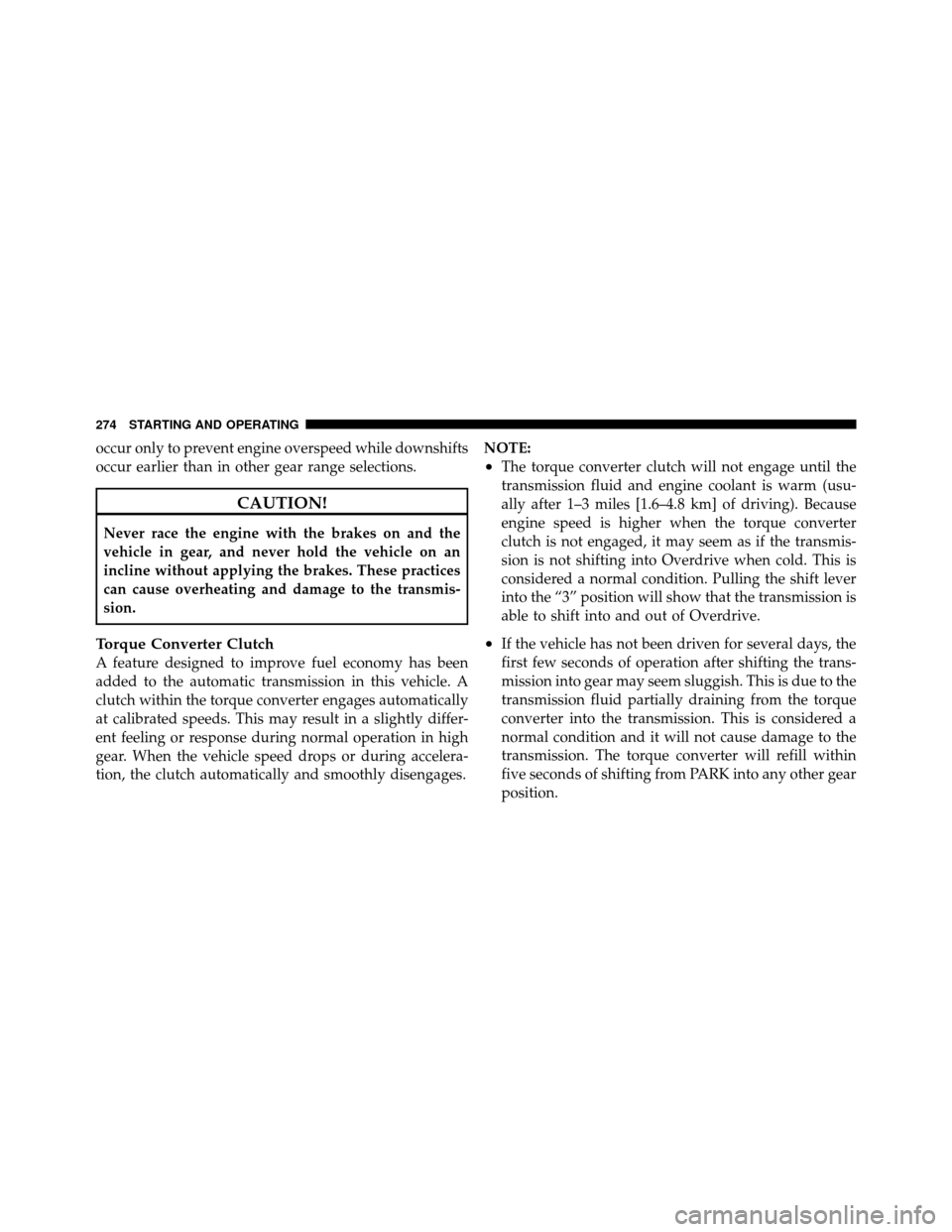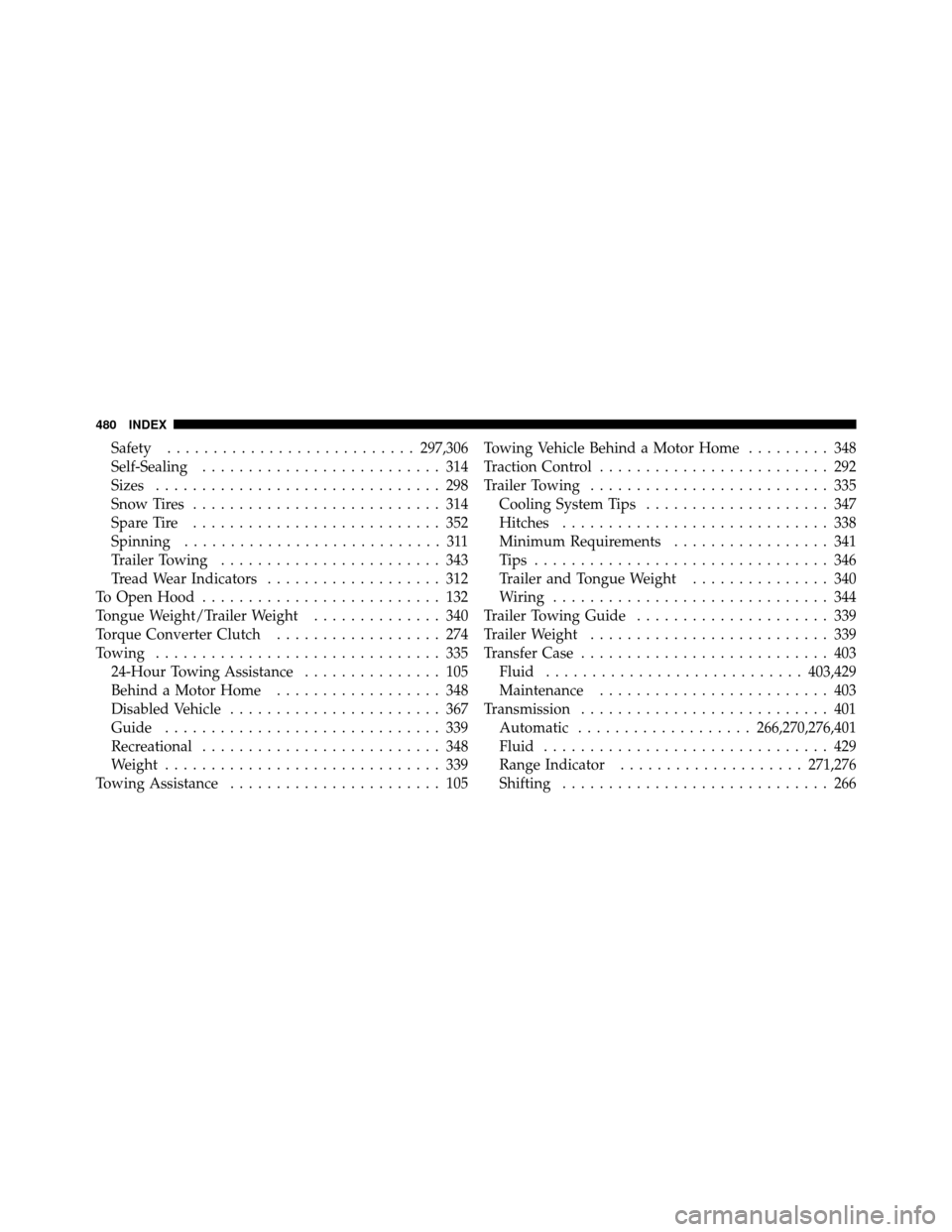Page 274 of 484

“D” (Overdrive)
This range is used for most city and highway driving. It
provides the smoothest up shifts and down shifts and the
best fuel economy. Select the “3” range when frequent
transmission shifting occurs when using the Overdrive
range, such as when operating the vehicle under heavy
loading conditions (in hilly terrain, traveling into strong
head winds, or while towing heavy trailers).
NOTE:
•If the vehicle is started in cold temperatures, shifts into
Overdrive may be delayed. Normal Overdrive and
shifting operation will resume when the temperature
of the transmission reaches the appropriate tempera-
ture. Refer to the “Note” under “Torque Converter
Clutch” later in this section.
•If the transmission temperature gets too hot, the
transmission may downshift out of Overdrive or en-
gage Overdrive at higher vehicle speeds until the
transmission cools down. After cooldown, Overdrive
will resume normal operation.
“3” (Third)
This range eliminates shifts into Overdrive. The transmis-
sion will operate normally in 1st, 2nd, and 3rd while in
this range. The “3” position should also be used when
descending steep grades to prevent brake system dis-
tress.
NOTE:Using the “3” range while operating the vehicle
under heavy operating conditions will improve perfor-
mance and extend transmission life by reducing exces-
sive shifting and heat buildup.
“L” (Low)
This range should be used for engine braking when
descending very steep grades. In this range, upshifts will
5
STARTING AND OPERATING 273
Page 275 of 484

occur only to prevent engine overspeed while downshifts
occur earlier than in other gear range selections.
CAUTION!
Never race the engine with the brakes on and the
vehicle in gear, and never hold the vehicle on an
incline without applying the brakes. These practices
can cause overheating and damage to the transmis-
sion.
Torque Converter Clutch
A feature designed to improve fuel economy has been
added to the automatic transmission in this vehicle. A
clutch within the torque converter engages automatically
at calibrated speeds. This may result in a slightly differ-
ent feeling or response during normal operation in high
gear. When the vehicle speed drops or during accelera-
tion, the clutch automatically and smoothly disengages.NOTE:
•The torque converter clutch will not engage until the
transmission fluid and engine coolant is warm (usu-
ally after 1–3 miles [1.6–4.8 km] of driving). Because
engine speed is higher when the torque converter
clutch is not engaged, it may seem as if the transmis-
sion is not shifting into Overdrive when cold. This is
considered a normal condition. Pulling the shift lever
into the “3” position will show that the transmission is
able to shift into and out of Overdrive.
•If the vehicle has not been driven for several days, the
first few seconds of operation after shifting the trans-
mission into gear may seem sluggish. This is due to the
transmission fluid partially draining from the torque
converter into the transmission. This is considered a
normal condition and it will not cause damage to the
transmission. The torque converter will refill within
five seconds of shifting from PARK into any other gear
position.
274 STARTING AND OPERATING
Page 481 of 484

Safety........................... 297,306
Self-Sealing .......................... 314
Sizes ............................... 298
Snow Tires ........................... 314
Spare Tire ........................... 352
Spinning ............................ 311
Trailer Towing ........................ 343
Tread Wear Indicators ................... 312
To Open Hood .......................... 132
Tongue Weight/Trailer Weight .............. 340
Torque Converter Clutch .................. 274
Towing ............................... 335
24-Hour Towing Assistance ............... 105
Behind a Motor Home .................. 348
Disabled Vehicle ....................... 367
Guide .............................. 339
Recreational .......................... 348
Weight .............................. 339
Towing Assistance ....................... 105 Towing Vehicle Behind a Motor Home
......... 348
Traction Control ......................... 292
Trailer Towing .......................... 335
Cooling System Tips .................... 347
Hitches ............................. 338
Minimum Requirements ................. 341
Tips ................................ 346
Trailer and Tongue Weight ............... 340
Wiring .............................. 344
Trailer Towing Guide ..................... 339
Trailer Weight .......................... 339
Transfer Case ........................... 403
Fluid ............................ 403,429
Maintenance ......................... 403
Transmission ........................... 401
Automatic ................... 266,270,276,401
Fluid ............................... 429
Range Indicator .................... 271,276
Shifting ............................. 266
480 INDEX